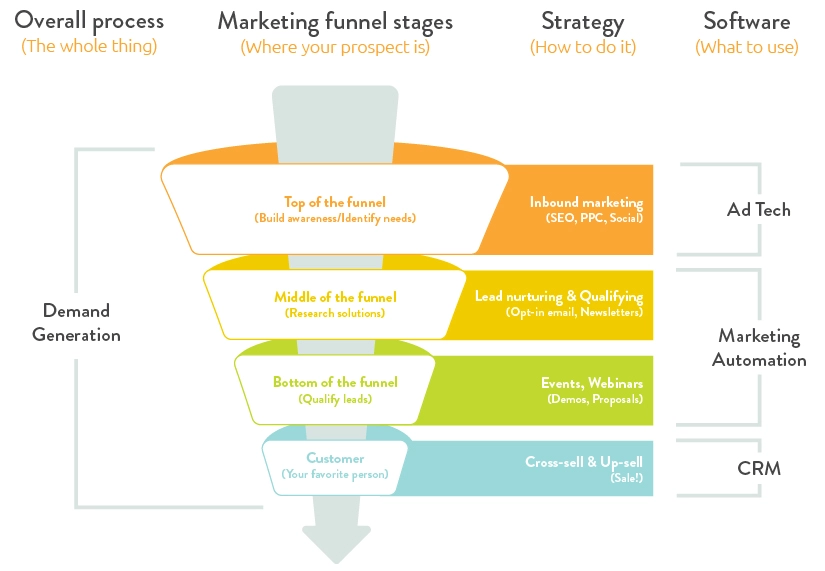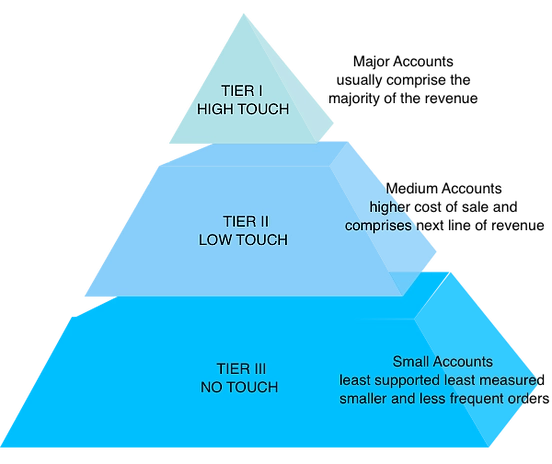
Introduction
Account-based marketing (ABM) is no longer a new concept to B2B companies. It’s effectiveness as a marketing strategy has seen it gain traction among businesses in recent times, and managed cloud software companies have not been left behind.
Generally, businesses that embrace the ABM approach treat their customers or prospects as individual markets – not one huge audience. This highly targeted and personal strategy means that B2B companies can focus entirely on their customers and proceed to customize their marketing efforts – including content creation – with them in mind.
In most cases, the returns from ABM campaigns are amazing. Data from ITSMA shows 85% of B2B marketers report that ABM outcomes superceed the investments they put in other marketing initiatives. But for managed cloud software companies seeking to boost their demand generation funnel, how can ABM help?
In this article, we explore different ways account-based marketing strategy can do a better job in demand generation funnel for managed cloud software companies. But before we delve into that, let’s look at what demand generation funnel entails.
Defining Demand Generation Funnel and Its Importance
Demand generation simply refers to a detailed sales and marketing program that is designed to generate interest in the services or products that B2B companies sell. Demand generation also entails nurturing the most promising prospects to become customers and retaining them in the long run.
The demand generation funnel is the tool that enables B2B companies to measure the effectiveness and impact of demand creation actions in terms of converting leads into actual customers.

Source: Hileman Group
Some of the details that the funnel brings to the fore are:
- The best leads for the business
- The stage that those leads are at in the buying process
- How those leads can go through the sales funnel and convert into actual buyers
- Stages where prospects either drop out or get stuck before converting into customers
5 Ways ABM Boosts B2B Demand Generation Funnel
Like any other business, demand generation for cloud solutions can be challenging but not impossible. B2B companies that provide managed cloud software services and products can adopt various ABM strategies to nurture their best leads into real customers. Here are five ways they can achieve this:
1) Choose the Target Audience Based on Data
Companies that use the ABM marketing strategy tend to focus on a smaller audience – this means that accounts are selected based on data. The ABM approach encourages companies to focus on the most promising customers. To get ideal customers who have the most viable lifetime value, managed cloud software companies need accurate data. This means investing time in research to generate data to facilitate profiling of customers.
Data provides invaluable insights about customer preferences, behavior and attitudes that are useful in demand generation. As a matter of fact, a survey by Forrester shows that 92% of businesses attribute their success with ABM to better research and data. Managed cloud software companies can leverage customer data to improve their demand generation campaigns by making them more personal.
2) Classify Customer Accounts in Tiers
For most managed cloud software companies, marketing budgets are always limited. To realize the best results, these B2B companies must use the available resources where they have a chance of getting the highest results. The best way to determine which customers to focus on more is to classify customer accounts in tiers. This simple but highly effective tactic allows managed cloud software companies to:
- Identify best leads and assign them to a team for immediate nurturing
- Balance available resources – both time and staff – that are required to work with each high value account
The criteria of tiering customer accounts largely depends on the goals that a business had. Before rolling out the account tiering process, B2B companies should determine the following:
- Priorities and whether they want to build long-term partnerships with their identified leads
- Target – are they Fortune 500 firms or startups
- Deals – are they looking for one-time deals or long-term business
The best way to tier customer accounts is to look at how well they fit in the customer profile that your company has. Here’s how an ideal customer tier would look like:
- Top Tier: Comprises accounts that fit perfectly with a B2B company’s customer profile and have great potential to become long-term customers
- Middle Tier: Comprises accounts that are a good fit but have a data profile that differs slightly with the company’s customer profile. They offer lesser opportunities for lasting partnership
- Bottom Tier: Comprises accounts that are far from fitting in a company’s customer profile and have little or no possible benefits.

Source: PushForce
With the customer account tiers in place, focus more on nurturing the top tier as those are the most promising accounts.
3) Generate Personalized Conversations
Most managed cloud software company sales reps focus on generating new leads as opposed to nurturing those that already exist. However, the success of ABM lies in focusing on the later – it involves optimizing nurtured leads with a view of building lucrative, lasting partnerships. A great way to do this is through email campaigns – but this has to be done in a very personalized way.
While developing personalized emails sounds like a simple thing to do, it really isn’t. To ensure that the emails targeting high value leads do not appear obnoxious, it is important that managed cloud software companies write emails that have a compelling introduction, are relevant to the customer and are friendly.
There are several things you need to pay attention to when writing emails. For emails to evoke interest and generate meaningful engagement, they need to:
- Be written in a professional and objective manner
- Demonstrate an understanding of pain points in the industry
- Highlight the benefits that the customer will get
- Appreciative of a longer purchase journey
Because B2B customers take time to make purchase decisions, follow-up is critical. This means sending follow-up emails that are as compelling and informative as the first email. Most ABM tactics are about presentation and delivery of content. This is because focusing on customer accounts gives a company the leeway to generate content for their websites in the form of ebooks, case studies and white papers.
Of importance to note is the need to keep email messages well aligned with online content that the company has on its website and other online platforms. When the value propositions in managed cloud software company emails are aligned well with a company’s content, the impact is amplified. Once this is done, send the emails at the right time. Timing matters a lot in email campaigns. The best way to get this right is by using email automation software to schedule emails. When scheduling emails, managed cloud software companies need to consider several factors. These include:
- How target customers work or live based on their profiles – relevant aspects to consider include their work hours, frequency of checking emails and demographics like age
- Time of the day to send emails
- Time zone if a managed cloud software company that target customers in other parts of the world
- Which day of the week to send – studies show Tuesdays and Thursdays have the highest productivity levels hence emails register 19% or more open rates. Wednesdays are good days to send reminders according to a report by Hubspot.

Source: MailChimp
Email automation allows managed cloud software companies to set up a customer account – each with its own set of features including time management and communication preferences. This gives you confidence that each email that is sent to them reaches at the right time.
4) Leverage One-on-One Meetings
Though emails work well as communication starters, B2B companies need to move communication with high value prospects a notch higher by giving them opportunities to talk about their issues and concerns in depth. At the same time, email interactions may not significantly increase a company’s rate of closing business conversations.
This is why face-to-face meetings are most ideal for this kind of conversation. Research by the Harvard Business Review shows that one-on-one meetings are 34% more effective than email requests. To stay ahead of competitors who are always willing to give customers personal time in the form of private meetings, surprise visits or chats during trade shows, managed cloud software companies should be flexible when finding ways to slot one-on-one meetings.
One way that managed cloud software companies can achieve this is to find places where such meetings could help them stand out and be aware of their schedules.
5) Maximize Social Media
Most managed cloud software companies tend to shy away from including social media in their ABM plans. However, social media can go a long way in helping companies build meaningful relationships with prospects and ensuring that their leads do not drop from the sales funnel. There are several ways managed cloud software companies can use social media to boost their demand generation funnel. These including:
- Providing social proof – this means keeping their target audience informed of their recent achievements, best reviews and interesting case studies
- Offering support – B2B companies can actively advise or respond to questions that their best leads raise on their preferred social media network as a way of constantly reminding them that they can always find help from the company
- Sharing content – companies can convert their social media pages into information hubs where they share professional insights and provide answers to common questions
Social media also plays an important role in helping managed cloud software companies determine whether their best leads are active or passive. If you have a best lead that has not posted anything or has a corporate blog that has not been updated for six months, the best thing to do is to drop that lead. There are different cloud software companies that B2B companies can work with to achieve this. For instance, LinkedIn Sales Navigator can help with discovery of new connections and targeting the right people in businesses.
Final Word
ABM is a great marketing strategy, but it only works when a company puts the necessary effort. Managed cloud software companies operate in a highly competitive space. With most businesses now embracing cloud computing, cloud software companies must focus on strengthening their ABM strategies to boost their demand generation funnel. The five aspects discussed above play a very strategic role in achieving this. The best way to make this work is to identify one or two strategies to start with then adopt the rest with time.
Our blog
Latest blog posts
Tool and strategies modern teams need to help their companies grow.

It is for fact that today's buying environment demands more. With longer sales cycles...

To build a marketing strategy that drives real results, you need more than creative i...

The 95/5 rule in B2B marketing shows that while only 5% of buyers are ready to purcha...







